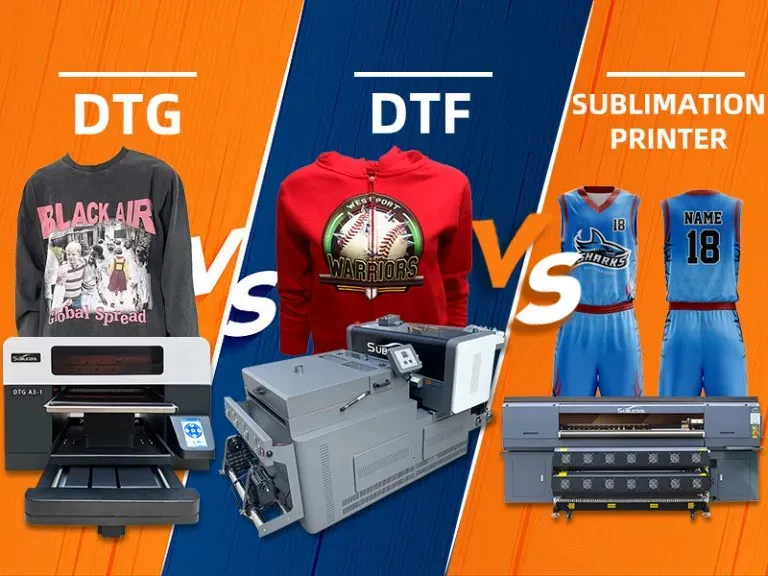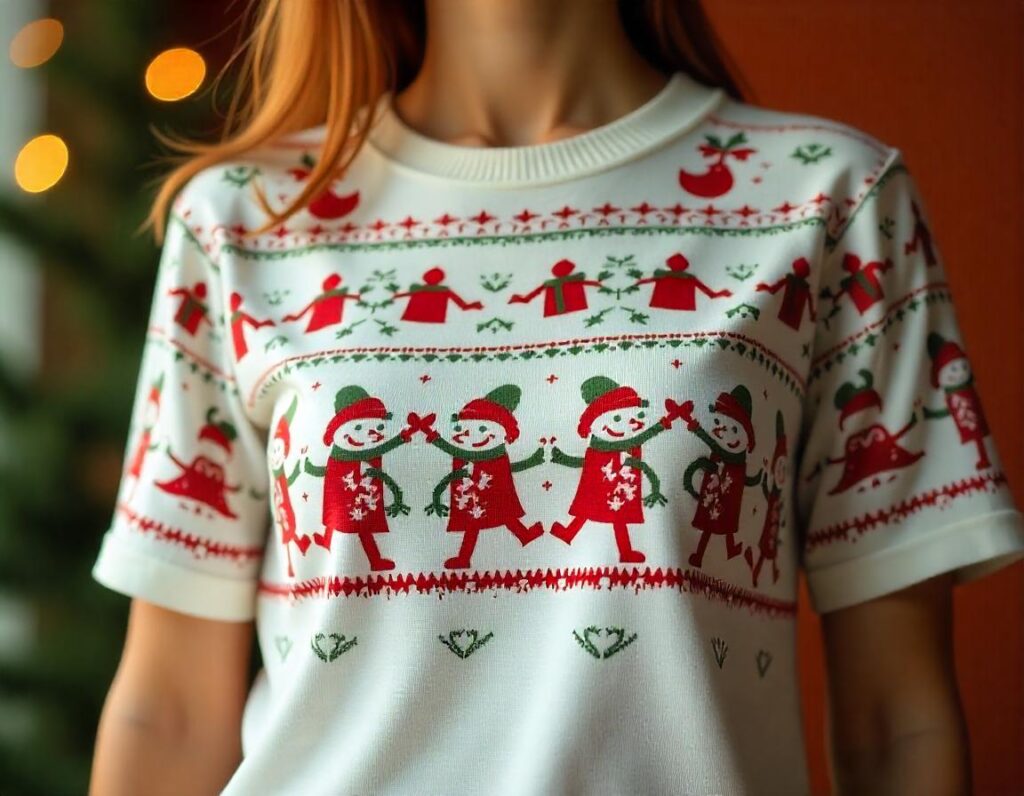In the world of textile printing, **DTF vs. DTG** has become a key discussion point for businesses aiming to choose the best printing technology. While **Direct-to-Film (DTF)** and **Direct-to-Garment (DTG)** methods both offer unique benefits, understanding their differences is essential for making an informed decision. DTF is renowned for its versatility across various fabric types, providing vibrant colors and a focus on sustainable printing methods. Conversely, DTG excites users with its ability to deliver intricate designs with stunning detail. As the demand for efficient and eco-friendly production grows, exploring these two printing technologies has never been more relevant for custom apparel brands looking to thrive in today’s market.
When it comes to modern textile printing solutions, the choice between **Direct-to-Film** and **Direct-to-Garment** options is crucial for many businesses. Each printing technique offers distinct advantages, catering to different types of fabric and design requirements. DTF printing stands out for its compatibility with various materials and its vibrant output, making it a favorite for larger production runs, while DTG shines in delivering highly detailed and colorful artwork on cotton fabrics. Choosing the right printing technology can dramatically influence efficiency, cost-effectiveness, and sustainability, factors increasingly prioritized by consumers. Understanding these methods is key to leveraging the best practices within the textile printing landscape.
Understanding DTF Printing: Benefits and Applications
Direct-to-Film (DTF) printing has rapidly gained traction in the textile industry, providing an innovative solution for businesses seeking efficient and versatile printing methods. This technology allows for vibrant designs to be printed on a special film and later transferred to a variety of fabrics through heat and pressure. One of the significant benefits of DTF is its compatibility with multiple material types, including cotton, polyester, and mixed blends. Such versatility makes it an attractive option for custom apparel makers who wish to cater to diverse textile preferences within their product line.
Additionally, DTF printing champions sustainability by minimizing waste during the production process. As businesses and consumers become more environmentally conscious, the adoption of reducing waste technologies like DTF is essential. Not only does it produce quality prints, but it also aligns with the growing demand for sustainable printing methods, reflecting the values of eco-friendly brands. This dual focus on quality and sustainability makes DTF a compelling choice for modern businesses aiming to make a significant impact in the competitive apparel market.
Examining DTG Printing: Features and Limitations
Direct-to-Garment (DTG) printing presents a unique way of applying ink directly onto fabric, akin to how ink is sprayed onto paper by a printer. This method excels in producing detailed artwork and vibrant color gradients, making it ideal for intricate designs and photographic images. Because of its high-quality output, DTG printing is especially suited for smaller custom orders or individual pieces, allowing businesses to offer personalized products to customers looking for something truly unique.
However, DTG does have some limitations that businesses must consider. Primarily, it is best suited for 100% cotton fabrics, which can significantly restrict fabric options for companies that wish to diversify their offerings. Furthermore, the production costs can be higher than DTF due to greater ink consumption during the printing process. Therefore, while DTG can deliver exceptional quality, potential users should evaluate whether its constraints align with their manufacturing needs and target market.
DTF vs. DTG: Key Differences in Fabric Compatibility
When deciding between DTF and DTG printing, one of the most significant factors to consider is fabric compatibility. DTF printing stands out for its ability to print effectively on a wide range of materials, from cotton and polyester to various synthetic blends. This versatility enables businesses to experiment with different fabric weights and textures, making it easier to accommodate customer requests for diverse styles and applications.
In stark contrast, DTG printing specializes in high-quality outputs primarily on 100% cotton garments. This limitation may pose challenges for businesses aiming to offer a broader selection that includes synthetic materials. Understanding these key differences in fabric compatibility is crucial for businesses, as it will largely influence both the product offerings and the customer satisfaction rates in their apparel lines.
Cost-Effectiveness: A Comparative Analysis of DTF and DTG
Cost is a critical consideration for any business involving printing technology, and DTF generally presents a more cost-effective solution than DTG, particularly for medium to large production runs. DTF’s efficiency in terms of lower ink consumption and the ability to print on multiple fabric types allows businesses to manage their costs effectively without sacrificing quality. This can lead to higher profit margins, especially when producing bulk orders of custom apparel.
On the other hand, DTG printing, while delivering exceptional detail and quality, tends to have higher operational costs due to its consumable needs. Additionally, since it’s often associated with smaller runs or custom print orders, businesses may find the cost per unit to be less favorable, especially when scaling up. Businesses evaluating their printing method should carefully weigh the cost implications of both DTF and DTG, depending on their production requirements and target markets.
The Sustainability Factor in DTF Printing
As sustainability becomes a paramount concern in the fashion industry, DTF printing can serve as a practical solution for businesses looking to minimize their environmental impact. This technique not only reduces material waste through its efficient production process, but it also utilizes eco-friendly inks that align with sustainable practices. By adopting DTF technology, companies can appeal to the growing segment of environmentally-conscious consumers who prefer brands that make deliberate efforts toward sustainability.
Moreover, the shift toward sustainable printing methods like DTF can enhance brand reputation and loyalty. Modern consumers are increasingly seeking out brands that demonstrate responsibility towards environmental stewardship. Thus, businesses that prioritize sustainable practices in their production processes not only contribute positively to the planet but also gain competitive advantages in attracting customers who value sustainability.
Future Trends in DTF and DTG Printing Technologies
The future of DTF and DTG printing technologies appears promising, with continuous innovations paving the way for greater accessibility and efficiency in textile printing. As advancements in DTF printing equipment emerge, smaller businesses are likely to adopt this technology, further democratizing the industry and fostering healthy competition. An increase in product lines utilizing DTF may also lead to improved printing quality and cost reduction, establishing it as a preferred method for many in the apparel sector.
In parallel, DTG printing technology is also expected to evolve, with manufacturers focusing on enhancing performance features and expanding pigment options. These developments are geared toward meeting the growing demand for high-quality custom prints while addressing some of the current limitations of DTG. As the printing landscape progresses, businesses will need to stay informed about these emerging trends to adapt strategies that leverage the latest advancements in printing technology.
Frequently Asked Questions
What are the main differences between DTF and DTG printing methods?
The primary differences between Direct-to-Film (DTF) and Direct-to-Garment (DTG) printing lie in their application and versatility. DTF printing uses heat to transfer designs from film to fabric and can work on various fabrics such as cotton and polyester, making it highly versatile. In contrast, DTG printing directly applies ink onto fabric like an inkjet printer, which is best suited for 100% cotton garments. Therefore, businesses seeking diverse textile options may prefer DTF.
Is DTF printing more sustainable compared to DTG printing?
Yes, Direct-to-Film (DTF) printing tends to be more sustainable than Direct-to-Garment (DTG) printing. DTF minimizes waste during the production process, offering an eco-friendlier alternative. As sustainability becomes increasingly important to consumers, DTF’s reduced environmental impact makes it an appealing choice for brands aiming for greener printing methods.
Which printing method, DTF or DTG, is more cost-effective for medium to large production runs?
For medium to large production runs, Direct-to-Film (DTF) printing is generally more cost-effective than Direct-to-Garment (DTG). DTF’s efficient use of materials and lower ink consumption leads to reduced production costs, making it ideal for businesses looking to optimize their printing processes.
Can DTF printing be used on a variety of fabrics, unlike DTG?
Yes, one of the significant advantages of Direct-to-Film (DTF) printing is its compatibility with a wide range of fabric types, including cotton, polyester, and blends. This versatility sets DTF apart from Direct-to-Garment (DTG) printing, which primarily works best on 100% cotton garments.
What are the advantages of Direct-to-Film (DTF) printing over Direct-to-Garment (DTG) printing?
Direct-to-Film (DTF) printing offers several advantages over Direct-to-Garment (DTG) printing, including versatility to print on various fabrics, vibrant colors, and improved durability. DTF’s sustainable practices and lower production waste also make it an attractive option for businesses focused on eco-friendly printing methods.
How do production setups differ for DTF and DTG printing technologies?
Production setups for DTF and DTG printing differ significantly. DTF setups generally require less specialized equipment and can adapt to various production environments, while DTG setups often need specific conditions, including pretreatment of garments and dedicated space for the printing process. This flexibility makes DTF a favorable option for businesses aiming for efficiency.
| Key Factor | DTF (Direct-to-Film) | DTG (Direct-to-Garment) |
|---|---|---|
| Fabric Compatibility | Versatile; works on various fabrics like cotton, polyester, and blends | Best for 100% cotton garments; limited fabric options |
| Vibrancy and Detail | Produces vibrant colors with excellent detail | Known for detail, gradients, and photographic quality |
| Production Efficiency | Cost-effective for medium to large production runs | Ideal for small, custom orders with higher per-item cost |
| Sustainability | Lower environmental impact; reduces waste | Higher ink consumption; potential environmental concerns |
Summary
When assessing **DTF vs. DTG**, it’s essential to consider the unique attributes of each printing method. DTF offers broader fabric compatibility, vibrant color quality, and enhanced sustainability, making it ideal for businesses seeking versatility and eco-friendliness. Conversely, DTG shines in custom, high-detail prints but is constrained by fabric choices and may incur higher production costs. Ultimately, your decision should reflect your production needs, fabric selections, and commitment to sustainability, paving the way for a successful venture into textile printing.



